Essential Gear

How often should chemical protective gear be replaced or maintained ?
Chemical protective gear is essential for workers exposed to hazardous chemicals. The frequency of replacement or maintenance depends on the type of gear, level of exposure, and manufacturer's recommendations. Regular visual inspections and testing are crucial to ensure that the gear remains effective and safe. By following the manufacturer's guidelines, workers can minimize their risk of exposure to hazardous chemicals and protect their health and well-being.

What kind of cycling gear do I need for road biking ?
Road biking requires specific gear for safety, comfort, and efficiency. Essential items include a well-fitted helmet and road bike, moisture-wicking clothing, protective accessories like sunglasses and gloves, hydration options, tools for repairs, first aid supplies, safety items such as reflective gear and lights, performance enhancers including clipless pedals and cycling computers, storage solutions for longer rides or tours, and maintenance tools to keep the bike in top condition.

What are some essential items every woman should carry for safety while traveling ?
Traveling can be an exciting and enriching experience, but it's important to prioritize safety, especially for women who may face unique challenges. Here are some essential items that every woman should carry to ensure their safety while on the road: 1. Personal Alarm 2. Pepper Spray 3. Whistle 4. Mobile Phone 5. ID and Emergency Contact Information 6. First Aid Kit 7. Money and Cards 8. Chargers and Power Banks 9. Headphones or Earbuds 10. Trustworthy Travel Companion (if possible) 11. Knowledge of Local Area and Culture 12. Door Stop Alarm or Wedge 13. Reflective Gear or Wearable Tech 14. Water Bottle 15. Mini Flashlight or Keychain Light 16. Duct Tape or Cable Ties 17. Extra Clothing and Rain Gear 18. Multi-tool or Small Knife 19. Sun Protection 20. Seat Cutter or Glass Breaker

What should I pack for an adventure travel activity ?
Adventure travel activities can be thrilling and exciting, but it's important to pack the right gear to ensure your safety and comfort. Here are some essential items to consider packing for your next adventure: - Clothing: A waterproof jacket with a high waterproof rating and breathability is essential for outdoor activities in wet conditions. Quick-dry shirts and pants that are comfortable to move in and suitable for the climate you'll be traveling in are ideal. Comfortable shoes or boots that provide support, traction, and comfort are also important. Pack warm layers like a fleece jacket or sweater for cooler temperatures. - Gear: Choose a backpack that's comfortable to wear and has enough space for all your gear. A headlamp or flashlight is essential for navigating in the dark or during power outages. Pack extra batteries or a charger to ensure you have enough light throughout your trip. A well-stocked first aid kit with bandages, antiseptic wipes, pain relievers, and any prescription medications you may need is important. A multi-tool can come in handy for various tasks. - Other Essentials: A reusable water bottle and a water filter or purification tablets are crucial for staying hydrated. High-energy snacks and food that are easy to carry and won't spoil quickly are great options for fueling up during your adventure. Reliable navigation tools like a map, compass, or GPS device are essential for finding your way in unfamiliar terrain. By packing these essential items, you'll be prepared for whatever challenges come your way during your adventure travel activity. Remember to also check the weather forecast and any specific requirements for your destination to ensure you have everything you need for a safe and enjoyable trip.
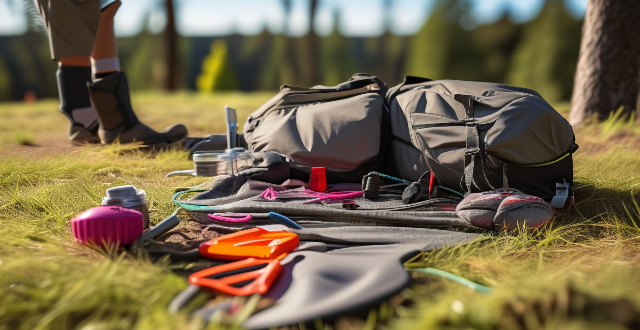
What are some essential sports equipment for outdoor activities like hiking and camping ?
When engaging in outdoor activities like hiking and camping, it is important to have the right sports equipment for safety, comfort, and enjoyment. Essential items include appropriate footwear such as hiking boots and waterproof socks, weather-appropriate clothing, backpacks and bags with dry bags or waterproof containers, sleeping gear like tents and sleeping bags, cooking and eating utensils, lighting and navigation tools, a first aid kit, and miscellaneous items such as multi-tools, sunscreen, and emergency signaling devices. Tailor your gear list to the specific needs of your adventure, check the weather forecast before heading out, and be prepared for any sudden changes in climate or terrain.
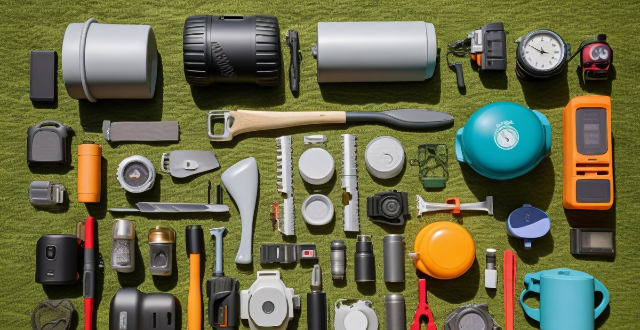
How can I prepare for a multi-day hiking trip ?
Going on a multi-day hiking trip requires careful preparation in terms of gear, physical fitness, planning, and safety measures. Essential items include a well-fitted backpack, layered clothing, comfortable footwear, sleeping gear, cooking supplies, navigation tools, first aid kit, hydration methods, and miscellaneous accessories like headlamps and insect repellent. Physical preparation involves cardiovascular training, strength exercises, and practice hikes. Planning should cover route familiarization, weather forecast checks, and adherence to Leave No Trace principles. Before departing, establish resupply strategies and emergency plans. By following this comprehensive guide, hikers can ensure their safety and comfort during extended treks.

What should I pack for a photography trip to a tropical destination ?
When planning a photography trip to a tropical destination, it's essential to pack the right gear and clothing to ensure you capture stunning images while staying comfortable and protected from the elements. Here are some items you should consider packing: Camera Gear: Primary camera body, backup camera body, variety of lenses, sturdy tripod, filters, high-capacity memory cards, extra batteries and charger, cleaning kit. Clothing and Accessories: Lightweight clothing made from natural fabrics like cotton or linen, waterproof jacket or raincoat, hat and sunglasses, sunscreen, insect repellent, comfortable shoes suitable for walking on uneven terrain or hiking trails, swimwear if you plan to swim or snorkel. Miscellaneous Items: Comfortable backpack or camera bag with enough space to carry all your gear and personal belongings, reusable water bottle filled with clean drinking water, snacks like energy bars, nuts or fruits to keep your energy levels up during long shoots or hikes, small first aid kit with essential items like bandages, antiseptic wipes, pain relievers and any prescription medications you may need, guidebooks or maps of the area you'll be exploring to help you navigate and find interesting locations to photograph.
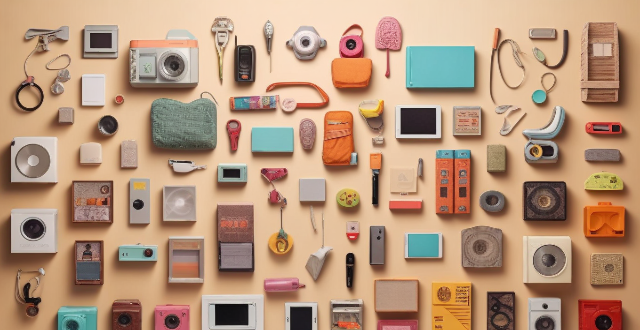
What are the most popular items people buy during shopping festivals ?
Shopping festivals offer discounts on a wide range of products, including electronics, apparel, home goods, beauty products, sports gear, toys, and books. People often buy smartphones, laptops, gaming consoles, fashion clothing, footwear, jewelry, kitchen appliances, bedding, makeup, fragrances, fitness equipment, camping gear, educational toys, baby care essentials, children's clothing, books, and stationery during these events.

What are some must-have sports equipment for runners ?
Running is a popular form of exercise that requires minimal equipment. However, having the right gear can make your running experience more comfortable, enjoyable, and safer. Here are some must-have sports equipment for runners: 1. **Running Shoes** - A good pair of running shoes will provide support, cushioning, and stability to your feet and ankles during your run. Look for shoes that fit well and are designed specifically for running. 2. **Socks** - Socks made from moisture-wicking materials like polyester or nylon can help keep your feet comfortable and blister-free during long runs. 3. **Running Clothes** - Choose clothing made from synthetic materials like polyester or nylon, which draw sweat away from your body and dry quickly. 4. **GPS Watch or Fitness Tracker** - A GPS watch or fitness tracker can help you keep track of your pace, distance, and other metrics while running. 5. **Hydration System** - A hydration system like a hydration belt, handheld water bottle, or hydration pack can help you stay hydrated during long runs in hot weather. 6. **Reflective Gear** - Wearing reflective gear is essential for staying visible to drivers and other pedestrians when running at night or in low-light conditions. 7. **Sun Protection** - Protect yourself from the sun's harmful UV rays by wearing a hat with a brim and applying sunscreen to exposed skin before heading out. 8. **Fuel and Nutrition** - For longer runs, carrying fuel and nutrition like energy gels, chews, or bars can help maintain your energy levels and prevent muscle cramps. Invest in quality equipment that suits your needs and preferences, and don't forget to replace worn-out items regularly to maintain their effectiveness and safety.

What are some popular items currently on sale ?
Popular items currently on sale include TVs, smartphonesPopular items currently on sale include TVs, smartphones consoles, kitchen appliances, smartphones, laptops, gaming consoles, kitchen appliances, cleaning devices, large appliances, clothing, handbags, shoes, jewelry, sports gear, camping gear, outdoor activities, educational toys, building sets, board games, and puzzles.

What are some essential makeup brushes for beginners ?
Starting a makeup collection can be overwhelming, especially when it comes to choosing the right brushes. Here are some essential makeup brushes that every beginner should have: 1. Foundation Brush: Used for applying liquid or cream foundations evenly on your face. 2. Powder Brush: Perfect for applying loose or pressed powder all over your face. 3. Blush Brush: Designed for applying blush or bronzer to the apples of your cheeks. 4. Eyeshadow Brush: Crucial for applying eyeshadow to your eyelids. 5. Eyeliner Brush: Ideal for creating sharp lines along your upper lash line. 6. Mascara Brush: Helps achieve clump-free, separated lashes (optional). 7. Lip Brush: Essential for applying lipstick or lip gloss precisely. These seven makeup brushes are essential for beginners who want to create a flawless base, enhance their features, and experiment with different looks. Remember to clean your brushes regularly to maintain their quality and longevity.
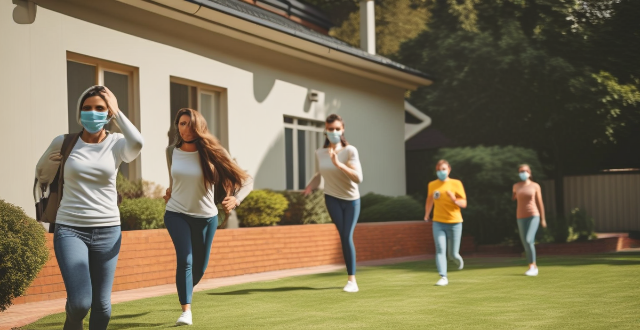
Is it necessary to wear protective gear when applying disinfectants in household settings ?
In conclusion, wearing protective gear when applying disinfectants in household settings is necessary to protect yourself from potential harm. Disinfectants contain chemicals that can be harmful if not used properly, and there are risks associated with their use. Personal Protective Equipment (PPE) such as gloves, goggles, masks, and protective clothing can help minimize these risks. While it may not be necessary to wear full PPE every time you clean your home, there are certain situations where it is recommended. It is always better to err on the side of caution and wear appropriate PPE when using disinfectants to ensure your safety and health.

How do I choose the right camera gear for a specific travel photography destination ?
Choosing the right camera gear for a specific travel photography destination involves considering factors such as the purpose of your photography, type of destination, weight and portability, weather conditions, power sources, image quality needs, and budget. It is important to prioritize based on what features are most important to you and to remember that lenses often have more impact on image quality than the camera body itself. By taking these factors into account, you can choose the best camera setup to ensure that you capture the memories of your journey in stunning detail.

What are the essential nutrients for women's health ?
Essential Nutrients for Women's Health Women's health requires attention to various aspects of nutrition, including essential nutrients such as calcium, iron, folic acid, vitamin D, omega-3 fatty acids, vitamin B12, fiber, vitamin C, zinc, magnesium, iodine, vitamin E, vitamin A, copper, choline, selenium, and potassium. These nutrients are crucial for maintaining good health, building and maintaining strong bones and teeth, making hemoglobin, preventing neural tube defects in developing babies, supporting bone and immune system health, supporting heart health and brain function, aiding digestion, helping form collagen in skin, important for immune system function, involved in more than 300 bodily processes, essential for thyroid function, acts as an antioxidant in the body, important for vision, helps the body form red blood cells, important for brain development and health, and acts as an antioxidant in the body. A balanced diet rich in these essential nutrients is crucial for women's health, and it's important to consult with a healthcare provider or a registered dietitian to ensure individual nutritional needs are met.
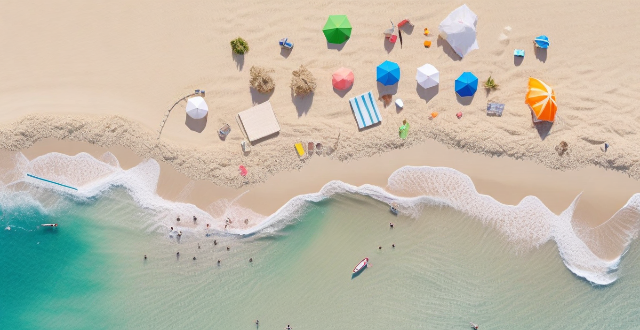
What are the essential items to pack for a beach vacation ?
When planning a beach vacation, it's essential to pack the right items. Must-haves include swimsuits, cover-ups, sun protection, footwear, towels, beach gear, water activity equipment, and extras like a waterproof phone case and first aid kit. Personalize your packing list based on your specific needs and activities planned during your beach vacation.

What should I wear to an idol concert ?
Attending an idol concert is a thrilling experience, and dressing appropriately can enhance your enjoyment of the event. Here are some tips on what to wear to make sure you're comfortable and stylish: Comfort First: Choose shoes that you can comfortably stand in for long periods of time. Wear clothes that allow you to move freely. Weather Appropriate: Light, breathable fabrics like cotton or linen are best for summer concerts, while layering up is essential for winter ones. Express Your Fandom: Show your support by wearing official merchandise from the idol group or artist. Safety & Visibility: A small bag is handy for carrying essentials, and consider adding reflective gear for nighttime concerts. Personal Style: Remember to stay true to your personal style when choosing your outfit. By considering these factors, you'll be well-prepared for an exciting and fashionable idol concert experience!

How do I choose the right baby gear (such as car seats, strollers, etc.) for my needs ?
When selecting baby gear like car seats and strollers, consider safety standards, comfort, ease of use, durability, budget, and personal preferences to make the best choice for your family's needs.

Can you suggest any essential items I should always pack for a vacation ?
When planning a vacation, it's important to pack the essential items that will ensure your comfort and safety throughout the trip. These include travel documents, clothing, toiletries, electronics and accessories, and miscellaneous items such as a travel pillow, reusable water bottle, snacks, reading material, cash and credit cards, and a travel journal. By packing these essentials in your carry-on luggage, you can ensure a comfortable and enjoyable vacation experience.

What are the essential items to include in a home first aid kit ?
A well-stocked first aid kit is an essential component of any home. It should contain items that can help you deal with minor injuries and illnesses that may occur in your household. Here are some of the essential items that you should include in your home first aid kit: 1. Adhesive Bandages 2. Sterile Gauze Pads and Rolls 3. Medical Tape 4. Antiseptic Wipes or Solution 5. Tweezers 6. Scissors 7. Thermometer 8. Pain Relievers 9. Antihistamines 10. Cold and Hot Packs 11. Latex Gloves 12. Safety Pins

What are the essential items to pack for a backpacking trip ?
Essential Items to Pack for a Backpacking Trip: Shelter and Sleeping Gear, Clothing, Food and Water, Cooking and Eating Utensils, First Aid Kit and Safety Items, Navigation Tools, and Miscellaneous Items.

What are the essential items to bring for a scuba diving or snorkeling trip ?
When planning a scuba diving or snorkeling trip, it's important to be prepared with the right gear and equipment. Here are some essential items to consider bringing: ## Scuba Diving ### Personal Gear - **Wetsuit or Drysuit**: Depending on the water temperature, you may need a wetsuit or drysuit to keep warm. - **Fins, Mask, and Regulator**: These are the basic pieces of scuba equipment that you'll need for each dive. - **Dive Computer**: A dive computer helps you track your depth, time, and nitrogen levels. - **Buoyancy Control Device (BCD)**: A BCD helps you adjust your buoyancy underwater. - **Dive Watch**: A watch with a timer function can help you keep track of your dive time. - **Dive Light**: A dive light is useful for exploring underwater caves or for night dives. - **Dive Knife**: A dive knife can be used for safety purposes or to cut through fishing line or nets. - **Dive Boots**: Dive boots protect your feet from sharp rocks and coral. - **Dive Gloves**: Dive gloves protect your hands from cold temperatures and abrasions. ### Safety Equipment - **First Aid Kit**: A first aid kit should include items such as bandages, antiseptic wipes, and pain relievers. - **Signal Whistle**: A signal whistle can be used to attract attention if you need assistance. - **Surface Marker Buoy (SMB)**: An SMB can be deployed to mark your position on the surface while you're underwater. - **Dive Flag**: A dive flag alerts boaters and other water users that there are divers in the area. - **Oxygen Boost**: An oxygen boost can be used in case of decompression sickness. ## Snorkeling ### Personal Gear - **Snorkeling Mask**: A well-fitting mask is essential for clear vision underwater. - **Snorkeling Fins**: Fins help you move more efficiently through the water. - **Snorkeling Vest**: A snorkeling vest provides added buoyancy and comfort while swimming. - **Sun Protection**: Sunscreen, sunglasses, and a hat are important for protecting your skin and eyes from the sun's harmful rays. - **Waterproof Camera**: A waterproof camera allows you to capture memories of your underwater adventures. - **Rash Guard**: A rash guard provides an extra layer of protection against the sun and abrasions. - **Dry Bag**: A dry bag can be used to store your belongings while you're in the water. ### Safety Equipment - **Life Jacket**: A life jacket is important for staying afloat if you become tired or encounter rough waters. - **Whistle**: A whistle can be used to attract attention if you need assistance. - **Water Shoes**: Water shoes provide protection for your feet while walking on rocky or slippery surfaces. - **Floatation Device**: A floatation device such as a pool noodle or kickboard can be used for added stability and support while swimming.

What are some essential tools for deep cleaning my home ?
Deep cleaning your home requires the right tools for effectiveness and efficiency. Essential tools include a powerful vacuum with a HEPA filter, a multi-purpose steam cleaner with various attachments, highly absorbent and reusable microfiber cloths, sponges, scrub brushes, a squeegee, mops with microfiber heads, cleaning solutions, protective gear, step stools or ladders, extendable dusters, brushes, and storage containers for organization. Having these tools on hand ensures you're prepared for any deep cleaning task while prioritizing safety and efficiency.
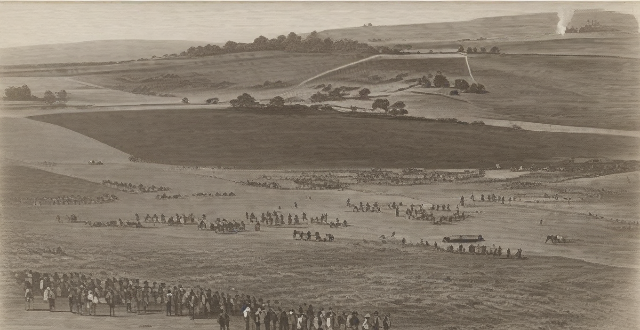
How can I prevent sports injuries ?
Sports injuries can be prevented by following these five key tips: warming up and stretching before physical activity, wearing proper gear, using proper technique, staying hydrated and nourished, and taking breaks and rest days. By implementing these measures, athletes can reduce their risk of injury and stay safe while playing sports.

Can essential oils be used in homemade cleaning solutions, and if so, which ones work best ?
Essential oils can be added to homemade cleaning solutions for natural, eco-friendly alternatives to commercial cleaners. Some of the best oils for cleaning include lemon, tea tree, lavender, peppermint, eucalyptus, and clove, each with its own unique benefits and uses. To use essential oils in cleaning solutions, choose a base like distilled water, white vinegar, baking soda, or castile soap, add the oils, mix well, test on a small area, and then clean as usual. However, it's important to always dilute essential oils before use and avoid using them around pets and children unless specified safe.

What are the essential items to pack for a backpacking trip across Europe ?
When backpacking across Europe, it's crucial to pack essential items that cater to your needs during the journey. These include versatile and lightweight clothing, comfortable shoes, warm layers, basic toiletries, sun protection, a first aid kit, a well-fitted backpack, a sleeping bag, a headlamp or flashlight, power bank and chargers, a travel adapter, a camera, travel documents and money, a reusable water bottle, a daypack, a travel journal and pen, and a lock. Packing light is key for an enjoyable trip.

How might AI impact the development of new sports equipment and gear ?
AI is revolutionizing the sports equipment industry by optimizing performance, enhancing safety, and enabling customization. It analyzes data to improve club design, predict ball trajectories, and monitor athlete safety with smart sensors. AI also personalizes equipment like running shoes based on gait analysis and adapts to individual needs during use. Additionally, it aids training and coaching through shooting analyzers and virtual coaches. Wearable technology with AI tracks body metrics and optimizes training. As AI advances, further innovations in sports equipment are anticipated.

What are some essential travel safety tips for international tourists ?
Traveling to a foreign country can be an exciting adventure, but it's important to prioritize safety during your journey. Here are some essential travel safety tips for international tourists: ## Research Your Destination Before embarking on your trip, research the destination thoroughly. Familiarize yourself with local customs, laws, and cultural norms. This will help you avoid any misunderstandings or unintentional offenses that could put you in harm's way. ### Learn Basic Phrases in the Local Language Knowing how to say simple phrases like "hello," "goodbye," "thank you," and "I don't understand" in the local language can go a long way in helping you communicate with locals and navigate your way around. ### Check the Weather Forecast Be prepared for any weather conditions by checking the forecast before you leave. Pack appropriate clothing and gear to ensure your comfort and safety throughout your trip. ## Stay Informed About Safety Concerns Stay up-to-date on any safety concerns or travel warnings related to your destination. The U.S. Department of State maintains a website with current information on safety issues and advisories for travelers. ### Register With Your Embassy or Consulate Register your travel plans with your embassy or consulate so they can contact you in case of an emergency or natural disaster. This is especially important if you plan to visit remote areas where communication might be limited. ## Be Cautious With Your Belongings When traveling abroad, it's crucial to take precautions to protect your belongings from theft or loss. Here are some tips to keep your valuables safe: ### Keep Your Valuables Close at Hand Carry only what you need when sightseeing or exploring new places. Keep your passport, cash, credit cards, and other valuables secure in a money belt or hidden pocket. ### Use Hotel Safes Wisely Hotel safes are convenient for storing valuable items while you're out and about. However, be aware that not all hotel safes are foolproof. Some may have vulnerabilities that could allow thieves to access your belongings. Always exercise caution when using hotel safes and consider bringing along a portable lock for added security. ### Be Mindful of Your Surroundings Stay alert and aware of your surroundings at all times. Avoid displaying expensive jewelry or electronics in public places, as these items can attract unwanted attention from pickpockets and thieves. If possible, try to blend in with the local crowd by dressing conservatively and avoiding flashy accessories. ## Follow Local Laws and Customs Respecting local laws and customs is essential for staying safe while traveling abroad. Here are some tips to help you navigate this aspect of international travel: ### Obey Local Laws Familiarize yourself with the legal system and laws of the country you're visiting. This includes understanding the penalties for breaking the law, which can vary widely depending on the country. Remember that what might be legal in your home country could be illegal elsewhere. ### Respect Local Customs Be mindful of local customs and traditions when interacting with locals. Dress appropriately for religious sites and respect their rules regarding photography and behavior. Additionally, be aware of social norms regarding physical contact (such as handshakes or hugs) and follow them accordingly. ## Seek Medical Attention When Needed If you become ill or injured during your trip, seek medical attention promptly. Here are some tips to help you stay healthy while traveling: ### Pack a First Aid Kit Bring a basic first aid kit with essential items such as bandages, antiseptic wipes, pain relievers, and any prescription medications you might need. This will help you handle minor injuries and illnesses without having to search for medical supplies in an unfamiliar place. ### Know Where to Go for Medical Help Research nearby hospitals and clinics before you leave home so you know where to go if you need medical assistance during your trip. It's also a good idea to purchase travel insurance that includes coverage for medical emergencies.

What are the must-have items in a business casual wardrobe for women ?
A business casual wardrobe for women should consist of essential pieces that can be mixed and matched to create different looks for various occasions. The basics include a white shirt, black pants, and a skirt. Accessories such as scarves, jewelry, and belts can add personality and style to any outfit. Outerwear essentials include a blazer, trench coat, and cardigan. Footwear essentials include pumps, flats, and boots. With these must-have items in your wardrobe, you will always look professional and put together.

What equipment do I need to bring to a tennis training camp ?
Attending a tennis training camp requires essential tennis gear, protective accessories, and personal items. Pack primary and spare racquets, practice and new balls, athletic clothing, tennis shoes, sun protection, and water bottles. Consider ankle braces, knee supports, and elbow bands for injury prevention. Don't forget casual clothes, toiletries, a backpack, reading material, and devices with chargers for off-court activities. Check with the camp organizers for specific requirements to ensure a complete packing list.

How can I prevent further injury while recovering from a sports injury ?
Recovering from a sports injury can be tough, but taking the right steps can prevent further harm. Here's how: 1. **Rest and Ice**: Rest to allow healing; apply ice to reduce swelling and pain. 2. **Compression and Elevation**: Use compression to reduce swelling and elevate the injured area above heart level. 3. **Gradual Return to Activity**: Work with a physical therapist and listen to your body as you gradually regain strength and mobility. 4. **Proper Gear and Technique**: Ensure you have the right gear and use proper form to prevent future injuries. 5. **Stay Hydrated and Nourished**: Drink plenty of water and eat a balanced diet to support your body's healing process.